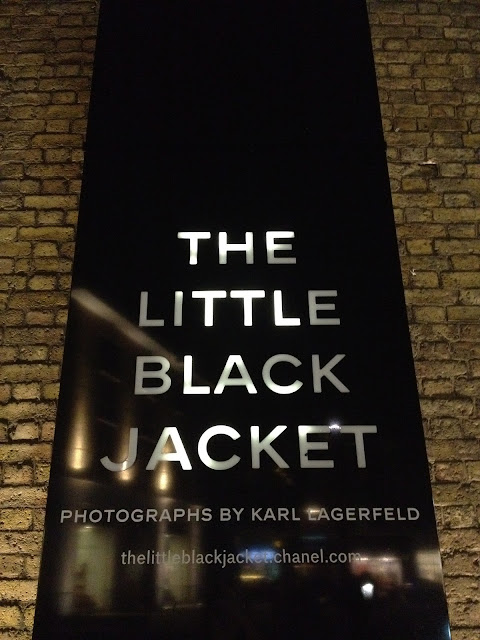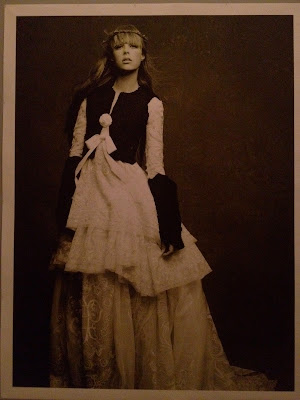My task today is to curate my own exhibition after visiting the National Army Museum in Chelsea. I found this museum quite fascinating, and a little overwhelming at just how much army-related memorabilia it housed, and the task of narrowing down my findings to a personal exhibit of just a few items, as requested in my uni brief, quite challenging! Well here goes....
MILITARY DETAILS IN FASHION
The relationship between army attire and fashion today
This exhibition aims to show the extent to which the fashion designers of today rely on early military costume as a source of inspiration for their collections. Year after year the military 'trend' appears on the catwalk spanning all four seasons, and the key details are usually always the same: the trench coat, the military jacket, the turned up collars, the brass buttons...It is quite remarkable how close the actual designs of the past garments are to today's pieces, and the comparisons will be exhibited clearly. The collection of items are mostly from World War 1 and World War 2, and are contrasted alongside images from designers who use the military theme regularly in their works, including Balmain, Alexander McQueen and Burberry.
Looking at the details of the army clothing and accessories in particular, the exhibit will explore the difference in purpose of each element in the designs, for example how a button detail in the military jacket would perhaps have had a functional use in the past, whereas today it might be added for an aesthetic reason.
"When the late‐twentieth‐century fashion editor Diana Vreeland called uniforms “the sportswear of the nineteenth century,” she was describing useful adaptations: examples of the cavalry to riding apparel, braid as reinforcement and decoration, plastrons and double‐breasted chests as double protection for the heart, and even romantic sashes that served by necessity to carry the wounded from the battlefield."
Richard Martin, and Harold Koda: Swords into Ploughshares, 1995
This is an officers uniform from the first world war. It is mainly in the colour khaki with details in brown. Pay close attention to the texture of the fabrics: the finely pressed cotton shirt, the smooth tweed-like coat and the rigid quality of the tie and rope trim. The outfit is belted in the middle with a thick leather, and a small pouch attached. Each element here serves a purpose: the colours are to blend in, camouflage tones...the shirt pressed to perfection to convey discipline and care...the rope to hold up a holster for a gun possibly...the belt to hold the outfit together and help with attachments over the shoulder sash.
These are images from Alexander McQueen's Autumn/Winter 2012 collection. The male wears an outfit strikingly similar to the first exhibit...the same pressed, khaki shirt with tie, the trench-type coat, the tweed texture of the trousers and the leather detailing of the gloves...all in the same palette - greens and browns. The female is in an almost identical overcoat, with matching pocket size and position, boxy-like silhouette, and cinched in at the waist with a thick leather belt. Though the purposes are clearly different...these are obviously designed purely for fashion's sake; the colours to fit in with the current trend, the fabrics with this seasons texture and the belt to show off the female figure.
This is an army Sargent's uniform from 1815. Mainly red with white trimming and a touch of yellow at the collar and cuffs. It is a short jacket with detail on the shoulder and has many buttons with the British army crown on them.
This is Balmain Spring Summer 2009. This was a huge hit on the catwalk and inspired various high street copies. It literally takes the same details of the original Sargent's jacket and brings it into the 21st century. Everything is there: the shoulder embellishment, the braiding stripes down the front, the multiple buttons, the collar and cuff detailing and it keeps to the same shape and silhouette.
Here is a typical trench coat from the late 1800's. It is made from heavyweight material to shelter the body from the terrible conditions in the trenches at war. It has large lapels that touch the shoulders when closed over, parallel buttons running down either side at the front and is the right length to practically cover the whole body.
Above are images of designs by Burberry. This is the classic trench coat with all the exact same detailing as the army overcoat, however this is no surprise as Thomas Burberry actually designed the original trench coat and his first commission was to the British army!
"The trenchcoat, made first and continuously by Burberry of London for Boer War and World War I service for officers needing protective cloth, closings, and latched wrists and collar, has become a basic of dress for both men and women. Its origins in officers' coats are remembered in name, but many today might more readily associate the coat with glamorous espionage andHumphrey Bogart in Casablanca, even as contemporary fashion specifications for most trenchcoats include vestigial D‐rings (designed for hand grenades) still worn by modern suburban commuter‐warriors."
Richard Martin, and Harold Koda: Swords into Ploughshares, 1995





















































